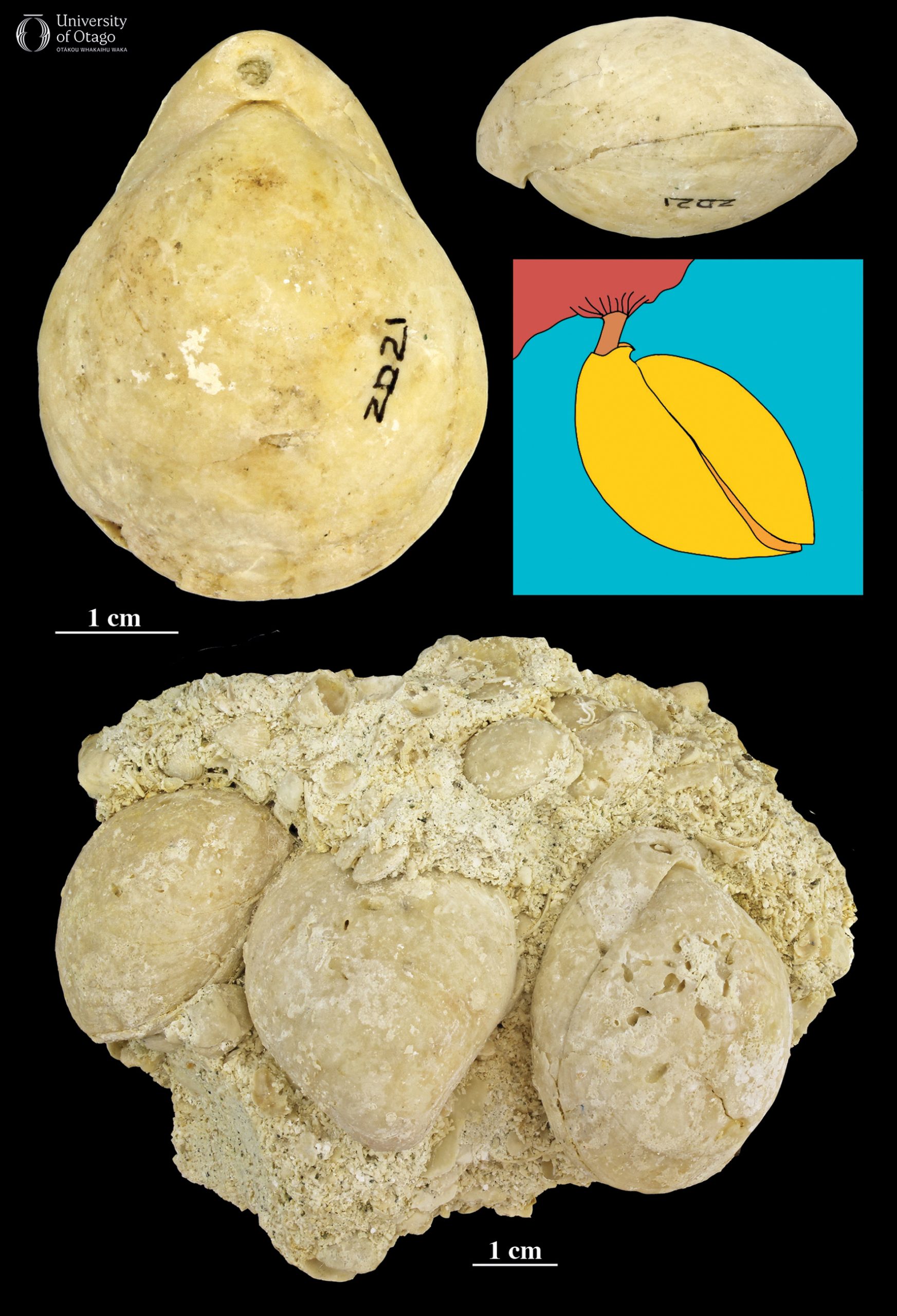45 Large brachiopod that easily forms attachments
Brachiopoda, Terebratulida: Liothyrella sp.
Liothyrella are medium to large-sized, short-looped brachiopods. Fossils are known from the Eocene and Oligocene of Aotearoa New Zealand and living species are known from New Zealand, Antarctica and South America.

Liothyrella brachiopods as individual fossils and as a cluster preserved together in limestone. An illustration shows how the brachiopod would have attached to a rock by its pedicle. Image credit: JH Robinson, with illustration adapted from Richardson (1981). |
Liothyrella is invariably attached to a hard substrate. Living individuals are often found in large clusters, all attached to each other. We know this also happened in fossil populations as well as the pedicle attachment to the shells leave a distinctive trace (a trace fossil known as a podichnus).
In the Ototara Limestone of North Otago, Liothyrella shells are sometimes very common in certain horizons. Their large shells, both live and dead, provided a substrate for many smaller invertebrates to attach to, including bryozoans, tube worms, barnacles, encrusting foraminifera and smaller ribbed brachiopods such as Terebratulina.
—Written by Jeffrey H Robinson
| Specimen number: OU 47988 (single shell), OU 47989 (small block with 3 shells) | Age: 34.6 million years old (late Eocene, Whaingaroan stage) |
| Locality: Kakanui, North Otago | Rock Formation: Ototara Limestone |
| Collected by: ZD Bowen and JD Campbell | |
| Citation: Robinson JH. 2004. Brachiopod and molluscan faunas of Everett’s Quarry, Kakanui. Unpublished MSc thesis, Department of Geology, University of Otago. | |
56 to 33.9 million years ago.
Richardson JR. 1981. Distribution and orientation of six articulate brachiopod species from New Zealand. New Zealand Journal of Zoology 8:189–196. doi.org/10.1080/03014223.1981.10427961
The stalk that attaches a brachiopod to the substrate.

